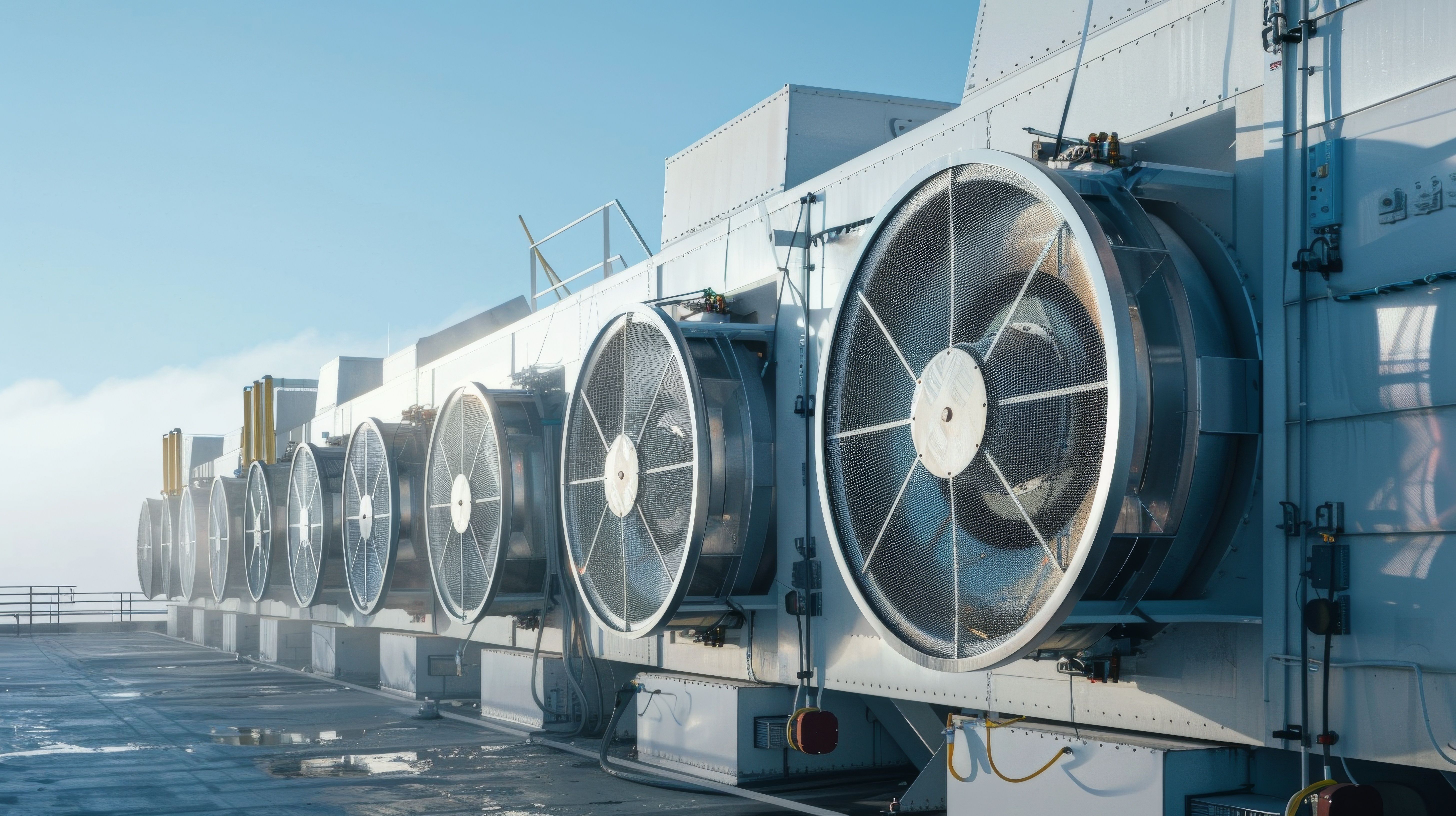
An Introduction to direct air capture
August 6, 2025 - Research
As the world grapples with the escalating impacts of climate change, the conversation turns not just to reducing emissions, but to removing existing carbon dioxide (CO2) from the atmosphere. Among the technologies emerging to address this challenge, Direct Air Capture with Carbon Storage (DACCS, often abbreviated in the voluntary carbon market as DAC) stands out as a theoretically promising, albeit complex, solution.
What is direct air capture with carbon storage?
Direct air capture (DAC) refers to technologies that capture carbon dioxide directly from the atmosphere, rather than from a concentrated source like the smokestack of a power plant. Once captured, the CO2 is permanently stored underground in geological formations, effectively removing it from the atmosphere (carbon storage, the ‘CS’). The basic principle involves drawing air through a system of filters or chemical solutions that selectively bind with CO2. Once the CO2 is bound, the capture material is heated or subjected to a vacuum, releasing the concentrated CO2 stream, which is then ready for storage or use. The material used to capture the CO2 can be regenerated and reused in a continuous cycle. While the materials are reusable, the entire process takes a great deal of energy and, for some types of DAC, water.
DAC in the carbon market
DAC technology is still emerging, meaning few projects are currently active within the voluntary carbon market. This reflects the early stage of its commercialization, given the high costs and energy demands involved. As of 2023, two pioneering DAC projects are issuing credits with Puro.earth, under their "Geologically stored carbon" methodology. These projects are not operating at their planned capacity, so available credits are limited. Several projects are also in development. One is listed under the carbon crediting program Isometric, and others are pre-selling credits without a third-party registry. Nevertheless, the forward sale of credits is occurring for both existing projects and those in development.

Where are DAC projects located?
DAC technology is being developed and deployed globally, though significant commercial scale-up is still in the early stages. Leading countries in DAC development include:
- Iceland: This country is home to Climeworks' Orca and Mammoth plants, the largest operational DAC facilities. This geothermal-powered facility combines DAC with geological storage in basalt rock.
- Canada: There are multiple DAC facilities under development in Canada, including Phlair’s Dawn and Electra 02.
- United States: Significant investment and development have been occurring here, with companies like Carbon Engineering (acquired by Occidental Petroleum), Clairity and Climeworks planning or operating pilot and larger-scale projects for either carbon storage or use.
- Europe (various countries): Research and smaller pilot projects are active across Europe, driven by climate targets and innovation funding.
These projects are often located in areas with access to renewable energy (due to high energy demands) and suitable geological storage sites for the captured CO2.
The benefits of direct air capture
DAC offers several unique and compelling advantages in the fight against climate change:
- Addressing legacy emissions: Unlike traditional carbon capture from industrial sources, DAC can remove CO2 already emitted and dispersed into the atmosphere.
- Locational flexibility: Since CO2 is present everywhere in the atmosphere, DAC plants can be sited independent of specific industrial emission sources. This flexibility allows for strategic placement near renewable energy sources or geological storage sites.
- Scalability potential: As the technology matures and costs decrease, DAC has the potential to operate at a scale necessary to significantly impact atmospheric CO2 levels.
Challenges facing direct air capture
Despite its promise, DAC faces considerable hurdles that need to be overcome for widespread deployment:
- High energy demand: Separating CO2 from the vast volume of ambient air is an energy-intensive process. Scaling DAC requires abundant, affordable and ideally renewable energy.
- Significant costs: The cost per tonne of CO2 captured and stored via DAC is the highest on the market. Facility construction and ongoing production costs are high but appear to be even higher because the volume of removals remains low. Further technological advancements and economies of scale are needed to decrease these costs.
- Scalability: Many DAC projects are currently producing less credits than anticipated. Moving from pilot projects to gigatonne-scale removal means massive investment in manufacturing, supply chains and CO2 transport and storage infrastructure.
- Accounting for infrastructure: We have just released additional research on accounting for embodied emissions (emissions made in the building and infrastructure phase of these facilities). Embodied emissions are not consistently accounted for across all DAC projects or carbon crediting programs. Failing to account for these emissions can lead to overcrediting or worse.
- Local impacts: While energy and water use for DAC are likely to constitute a small fraction of use at a national scale, the amount used may be significant at a local scale.
Direct Air Capture represents a new frontier in climate technology. While significant challenges in cost, energy and scale remain, ongoing innovation and increasing investment are positioning DAC as a potentially impactful component of a comprehensive strategy to achieve global climate goals and secure a net-zero future.
Calyx Global has posted the first DAC rating to our platform. View it on the platform.
Read our joint research paper with Meta that discusses accounting for embodied emissions in DAC and other engineered carbon removal solutions.
Keep up with carbon market trends
Get the monthly newsletter and stay in the loop.
Trusted By





